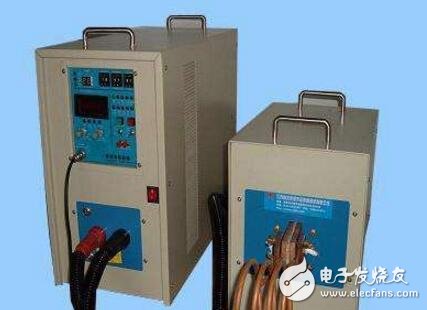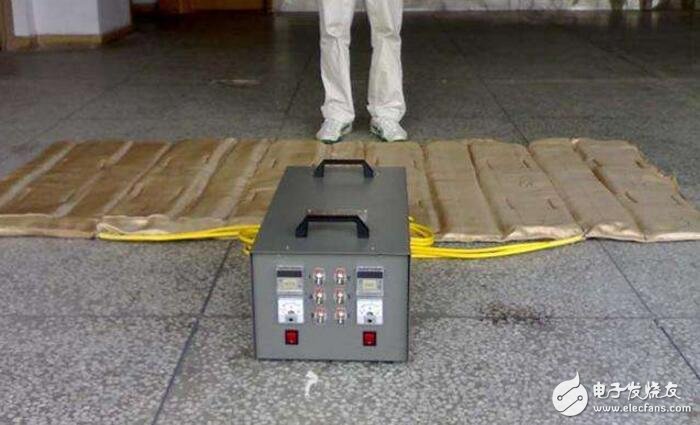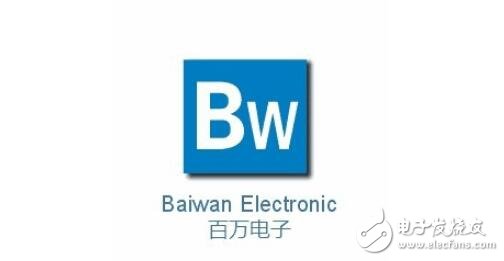Electromagnetic induction heating, or simply induction heating, is a method of heating a conductor material such as a metal material. It is mainly used for metal thermal processing, heat treatment, welding and melting. As the name suggests, induction heating uses electromagnetic induction to generate current in the interior of the material being heated, relying on the energy of these eddy currents for heating purposes. The basic components of an induction heating system include induction coils, AC power and workpieces. The coils can be made into different shapes depending on the heating target. The coil is connected to a power source that supplies an alternating current to the coil, and the alternating current flowing through the coil produces an alternating magnetic field that passes through the workpiece, which causes the workpiece to vortex to heat. The principle of induction heating is to follow the three basic principles of electromagnetic induction, skin effect and heat conduction. Induction heating is illustrated by a simulated single-turn shorted secondary coil. Taking the heating of the aid body as an example, the combination of the workpiece and the inductor can be seen as a transformer with a multi-turn primary coil (inductor coil) and a single-turn short-circuit secondary coil (cylinder workpiece), primary coil and secondary The coils are separated from each other by a small air gap. When energized, an induced current having the same frequency and opposite direction to the inductor, that is, eddy current, will be generated in the workpiece. When the current frequency is high, due to the surface effect, the eddy current is concentrated on the surface of the workpiece, resulting in a "skin effect." The induced current density is gradually reduced from the center of the surface of the heated workpiece, and the higher the frequency of the current, the greater the rate of decrease. This rate of decrease in current density also depends on the two physical quantities of resistivity and relative permeability of the material being heated. Indicates the distribution of the induced current as a function of the penetration depth and the control of the current distribution. The current density is reduced to about one-third of the value of the surface current density, which is the “skin depthâ€. According to the engineering, the depth from the surface to the current I/e (e=2.718) is the current penetration depth Δ. It is proved by calculation that 86.5% of the heat is generated in a thin layer with a depth of Δ. The four effects of induction heating and the "driving" effect of the magnetizer 1 Surface effect: When an alternating current flows through a conductor, the distribution of current density along the conductor cross section is not uniform. 2 Proximity effect: When the high-frequency current passes through two adjacent conductors, if the current direction is opposite, the current flows from the inside of the two conductors; if the current direction is the same, the current flows from the outside of the two conductors. This phenomenon is called the proximity effect. 3 Circulation effect: When the high-frequency current flows through the ring conductor, the maximum current density is distributed inside the ring conductor. This phenomenon is called the circulation effect. 4 sharp angle effect: When the gap between the inductor and the workpiece is the same, the magnetic induction line is easy to be concentrated at the sharp corner of the workpiece, and the induced current density is too high, so that overburning occurs at the sharp corner of the workpiece. For the sharp corner effect. 5 "Driving" effect of the magnetizer: When the induction heating surface is quenched, the circulating noise is silenced so that the high-frequency current is densely inside the inductor, which is unfavorable for the heating of the outer surface of the workpiece. However, when the inner hole of the workpiece is heated, the efficiency of the inductor is low. For this reason, a magnet is often placed on the inductor to drive the current to the outside of the inductor. Therefore, the essence of the magnetizer is to change the direction of the magnetic induction line. Generally, the commonly used magnetizer for high frequency is ferrite. The commonly used magnets for intermediate frequencies are silicon steel sheets or soft iron-like magnets. Induction heating surface quenching has the advantages of good surface quality, small brittleness, hard oxidative decarburization and small deformation of quenched surface, so induction heating equipment has been widely used in metal surface heat treatment. Induction heating equipment The induction heating device is a device that generates a specific frequency induced current, performs induction heating and surface hardening treatment. Induction heating surface quenching The workpiece is placed in an inductor wound with a hollow copper tube, and after passing through an intermediate frequency or high frequency alternating current, an induced current of the same frequency is formed on the surface of the workpiece, and the surface of the part is rapidly heated (the temperature is increased by 800 in a few seconds). 1000 degrees, the heart is still close to room temperature) Immediately after water cooling (or oil immersion quenching), the surface layer of the workpiece is hardened. Compared with ordinary heating quenching, induction heating surface quenching has the following advantages: 1. The heating speed is extremely fast, which can expand the A-body transition temperature range and shorten the transition time. 2. After quenching, the surface of the workpiece can be obtained with very fine cryptocrystalline martensite, and the hardness is slightly higher (2~3HRC). Low brittleness and high fatigue strength. 3. The workpiece processed by the process is not easy to be oxidized and decarburized, and even some workpieces can be directly assembled after being processed. 4, hardened layer depth, easy to control operation, easy to achieve mechanization, automation. Beijing Million Electronic Technology Center is located in Beijing Haidian High-Tech Park. Is a large-scale instrumentation production and sales, business areas mainly include: gas detectors, metal detectors, environmental protection equipment, health care, laboratory equipment, chemical equipment, agricultural equipment, mechanical and electrical equipment, fire safety equipment, power communication equipment Waiting for almost all industries. The company's business covers 33 provinces (municipalities) and autonomous regions in China. The strong capital base, large-scale storage base, convenient business communication and perfect after-sales service guarantee make the company develop rapidly and grow in scale. Not only has it achieved 100% recognition from customers, but it has also been well received in the industry. The company is mainly engaged in instrumentation, gas detectors, metal detectors, environmental protection equipment, medical care, chemical reagents, laboratory equipment, chemical equipment, agricultural equipment, mechanical and electrical equipment, power communication equipment, etc. IDC Type IDC Type ATKCONN ELECTRONICS CO., LTD , https://www.atkconn.com


What is induction heating?